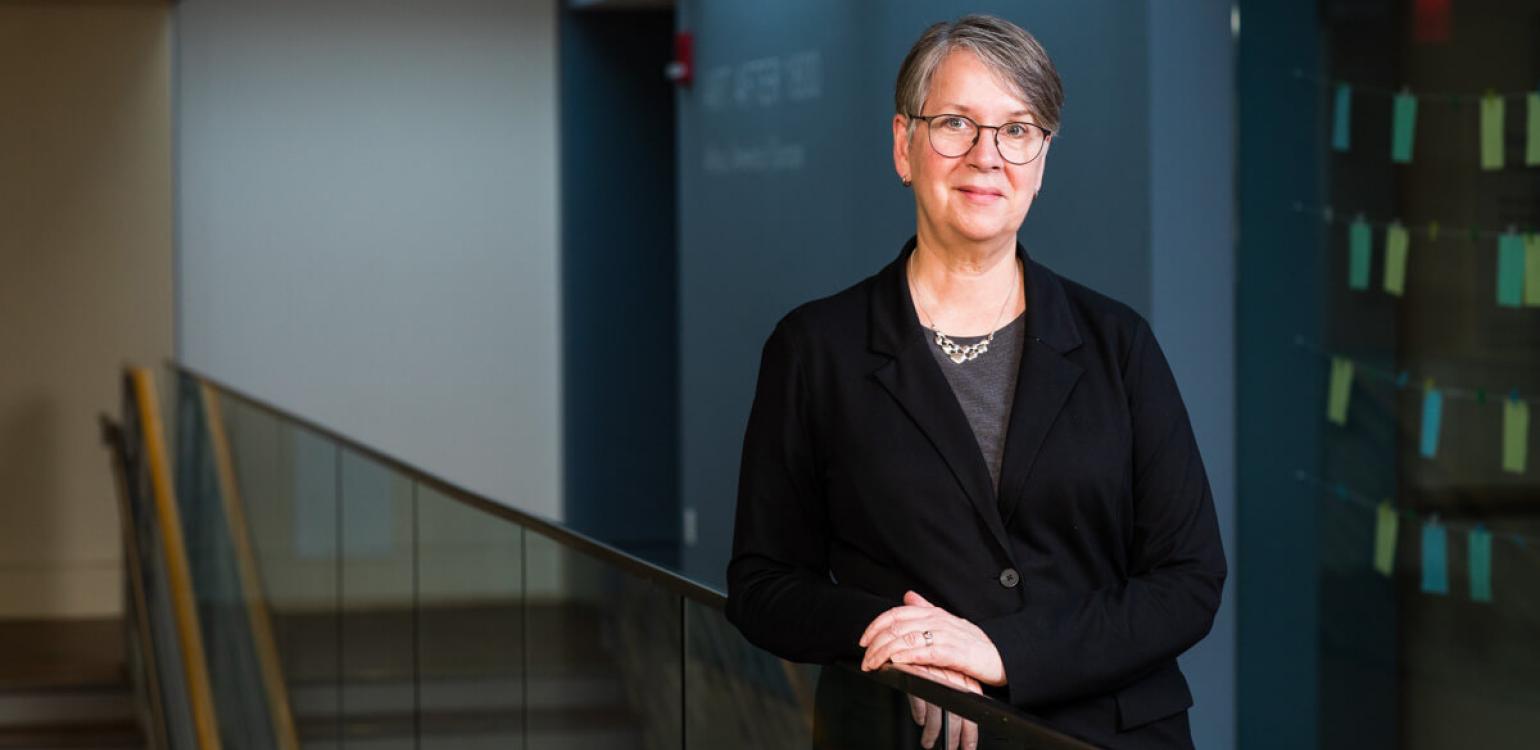
director's letter
Much like the rest of the world, SCMA has been in a mode of adaptation the past few years. Since March 2020, when COVID closed down our campus and life as we knew it, we have recalibrated, reconfigured, reimagined and—through an incredible amount of care and effort on the part of our dedicated staff—reopened in August 2021.
In this edition of SCHEMA, we are pleased to show our values in action and to share some of the many initiatives that defined and delighted us this year. Throughout the past year, the museum was able to maintain continuity, keep visitors and staff safe and healthy and provide a meaningful experience. It has been wonderful to see people moving through our galleries once again, connecting with art and each other. Connecting art and people is one of the six core values that guide and inform our work, along with questioning and changing our practices, sharing authority, listening actively, learning and adapting and being compassionate in all we do.
It continues to be our privilege and responsibility to meet the moment. For centuries, artists have inspired reflection by shining a light on issues of existence and experience, equity and representation, hardship and heartache, joy and celebration, helping us to make sense of the world around us. As an arts institution and a teaching museum, SCMA seeks to add value to important conversations happening in our community at Smith and at large.
The exhibition Maya Lin: Mappings complemented the opening of Smith’s new Neilson Library, designed by Lin, and provided visitors with a deeper, multidimensional exploration of her work. Through her art and architecture, Lin has always been committed to critical issues of the day. This engaging exhibition centered Lin’s consideration of the environment and the relationship between people and place, making visible the impacts of the climate crisis in ways that inspire learning, action and hope. Visitors responded powerfully to this, as did the educators we brought together to explore teaching and learning about climate change from grade school to college.
SCMA presented three recent film and video installations examining notions of democracy nationally and globally, in conjunction with Smith’s 2021–2022 campus-wide initiative, “Year on Democracies.” The life and writings of freedom fighter Frederick Douglass (1818–1895) inspired Isaac Julien’s Lessons of the Hour; FX Harsono’s NAMA attempts to heal the trauma endured by the ethnic Chinese minority in Indonesia; and the film Whitman, Alabama, by 2022 Lucille Geier Lakes Writer-in-Residence Jennifer Chang Crandall, considers the contemporary relevance of Walt Whitman’s poem “Song of Myself.” All three exhibitions inspired active, deep engagement with ideas and art and allowed for connection with the creators. In a first for us, Isaac Julien delivered the annual Miller Lecture on Art from London. Hosting an event digitally for viewers around the world, including watch parties on campus, is exciting and an example of our pandemic learnings and adaptations.
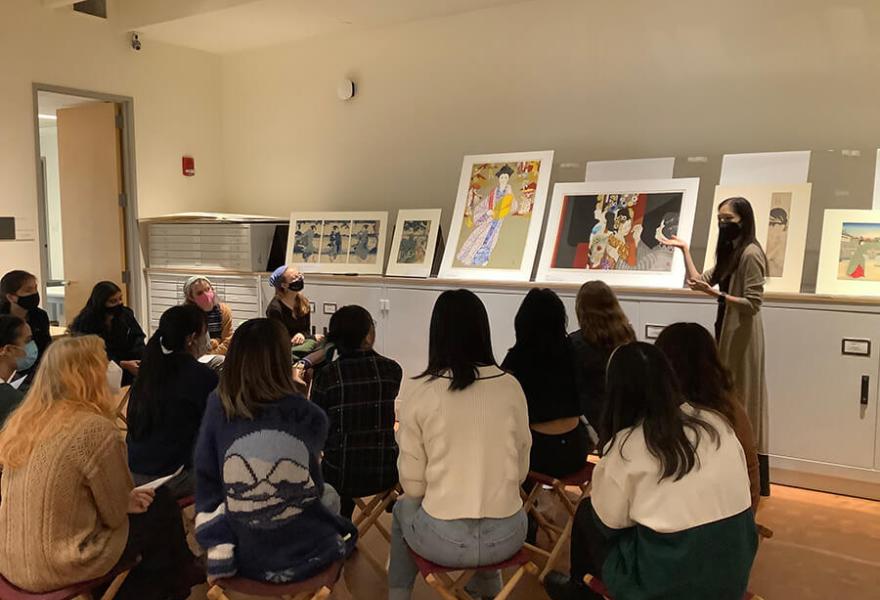
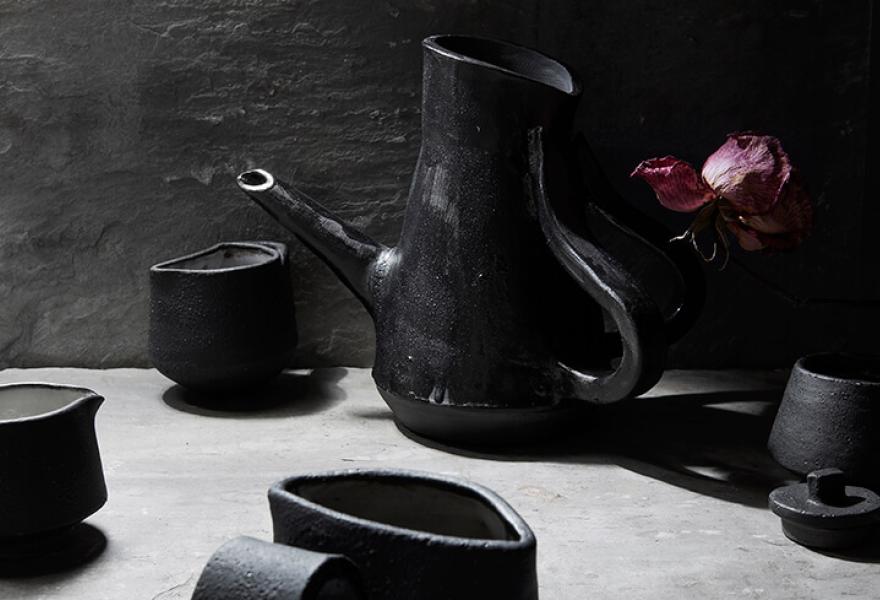
This was certainly true of our commission in three parts with Amanda Williams. Her site-specific installation An Imposing Number of Times explored how campus traditions create and transmit forms of belonging. The first part of the collaboration ended up being valuable in ways we never could have imagined, with its outdoor banners serving as an exhibition while the SCMA building was closed during the pandemic. This past year, two subsequent components of the commission came to fruition. The second project involved the shared work of planting hundreds of black and white tulips along the Smith campus's “desire paths,” the well-worn shortcuts representing where people want to go. The flowers bloomed in the spring of 2022, making those extraordinary pathways visible across three lawns on campus.
The third component was three ceramic tea sets Amanda Williams created in partnership with Chicago ceramicist Melissa Chin. These Matterful Black Lives sets each feature six cups and a teapot and other accessories intended to bring people together in dialogue and collaborative thinking—quite literally, as the designs call for cooperation to pour the tea. One of the tea sets was a gift to the museum’s collection; the other two are located at the President’s house and Mwangi Cultural Center and are available for student use for Friday tea. They come with instructions created to document this moment of their creation so that there is a continued understanding of their purpose as catalysts for exploring issues of tradition, intention and connection.
This year, class use of the collection was back up to pre-pandemic levels, as faculty reimagined instruction and adapted their practices. One might think that coordinating with the museum would add too many layers of complexity—and yet use of the collection hardly diminished during our closure. I think this speaks to our role as a resource for providing students with rich and meaningful learning experiences across academic disciplines. Charlene Shang Miller, in her role as Acting Associate Director of Academic Programs and Public Education, has served as a treasured partner for thinking creatively about how to best use our resources for education. Faculty and students continue to share how much they love these teaching sessions as a lens for looking at complex ideas.
This relates to a larger discussion at Smith College about competencies developed at a liberal arts college and their value in public discourse. SCMA, or any museum, is recognized as a site of cultural production and a place where students can apply outward-facing communication skills. So in addition to teaching about art, we have the opportunity to work with faculty to explore issues of interpretation, giving students insight into our practices as well as a role in their articulation and implementation.
This is not a light lift. Our museum has made a deep commitment to questioning what we do and how we do it as the museum field at large continues to reckon with its history of colonial enterprise. Engaging in this essential work in an academic environment, where we have knowledgeable and committed partners for those critical conversations, has been powerful. Decolonial theory, and the reconsideration of historical and subjective power structures, is very exciting to students and actively being taught by Smith faculty. These important conversations are giving rise to a generation of cultural consumers and leaders able to think with us about how arts institutions can, and must, evolve.
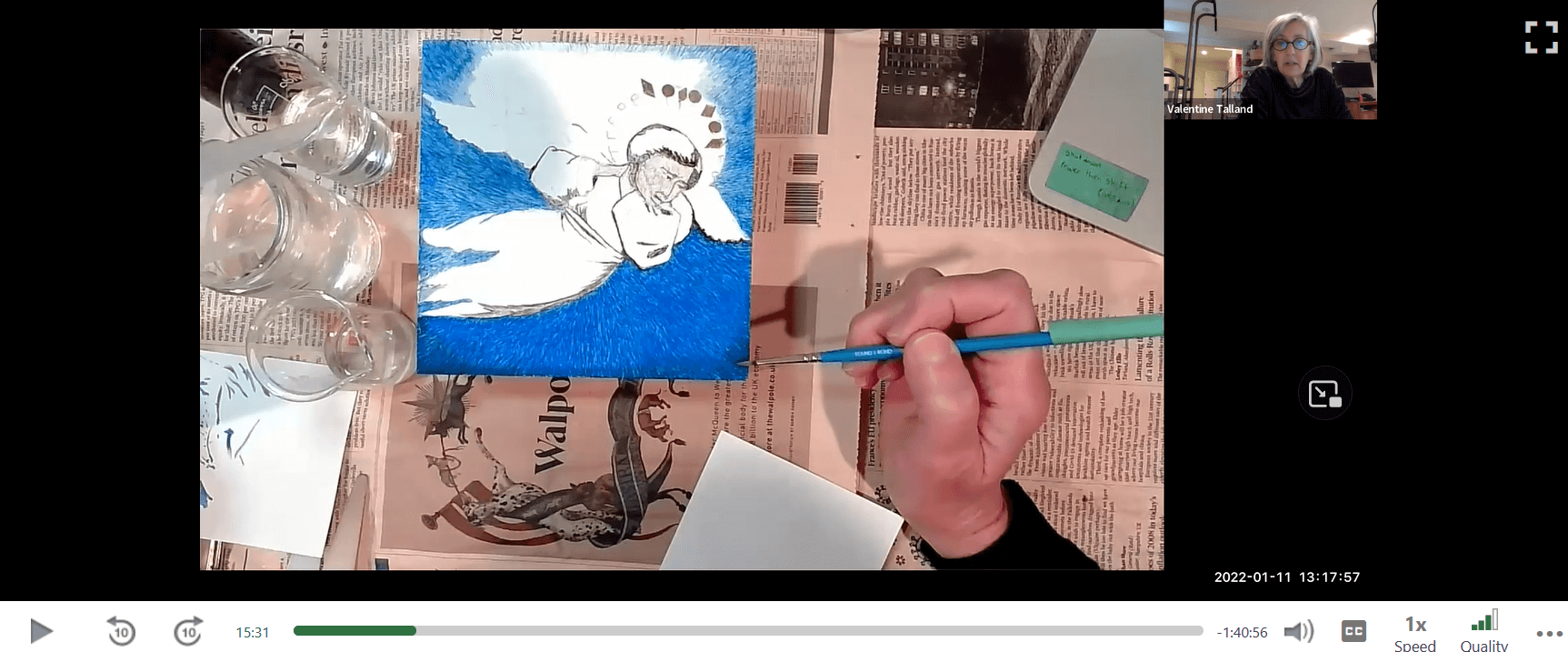
An example of this is the Five College Museum Collections Management Commons Project (MCMC), which aims to create a more efficient, accessible and inclusive shared database of cultural assets. MCMC hired two Post-Baccalaureate Assistants for Indigenous American Collections, Isabel Cordova ’19 and recent Dartmouth graduate Sydney Nguyen. They worked with the partner museums to review more than 2,500 objects in combined holdings and develop consistent, culturally appropriate vocabulary and guidelines. This included creating a framework and processes—in consultation with the cultures represented in these collections—for how our institutions can improve the description of these works and their discovery. We invited Isabel and Sydney to consider what an intervention in SCMA’s Art after 1800: America, Europe, Africa gallery might look like; specifically, how we could reframe Indigenous American work from our holdings and bring it into conversation with 19th-century American art. The Post-Baccalaureate Assistants hosted a feedback session with Dana Leibsohn’s class LAS 291 Decolonize This Museum to change up the Eurocentric narrative that has dominated our displays for too long. We welcome opportunities to engage this critical discourse among faculty and students.
Another important example is Brought to Life, which came to fruition after four years of research and technical study of polychrome wooden sculptures from Europe between 1300 and 1800. In January 2022, Curator of Painting and Sculpture Danielle Carrabino and art conservator Valentine Talland co-taught an interterm course offering students insight into exhibition development, complete with cultural context, materials analysis and an opportunity to practice the very techniques used in creating the objects. Danielle worked closely with both undergraduate and graduate student assistants, including Annaliese Edwards ’23J, who thoughtfully shared reflections about her work in a blog post and public program.
One more story that exemplifies the impact of students at the museum involves a significant acquisition. Mosa Molapo ’22, the Kennedy Museum Research Fellow in Art History, worked with Associate Director of Curatorial Affairs and Mary Walcott Keyes 1931 Curator of Prints, Drawings and Photographs Aprile Gallant to research the museum’s significant gift from the Joe Baio collection of photographs by an international group of women artists. As part of this work, we invited students to think about what this collection brings to our holdings, how it relates to the museum’s areas of strength and what it might suggest about areas for further development and acquisitions. Mosa also researched and wrote a thoughtful purchase proposal for a work by artist Andrea Chung—a diptych that integrates archival photographs and collage elements. The proposal articulated how this acquisition would bring a new voice into the collection that would be in conversation with the Baio collection and intersect with several areas of SCHEMA 2021–2022: Copy for Proofing 5 study here at Smith. It was a fruitful process all around: students are our core audience, so their perspective on how we develop the collection is valuable to us.
The Baio collection joins some 24,000 prints, drawings and photographs housed in SCMA’s Cunningham Center for the Study of Prints and Drawings, which provides both collection storage and a study space. It is an extraordinary thing for anyone to be able to come sit with a Van Gogh drawing or a Kara Walker print—unframed and in front of them so they can really see the texture of the materials. This year, we were able to move forward with a project to expand and enhance the Cunningham Center that had been delayed by the pandemic.
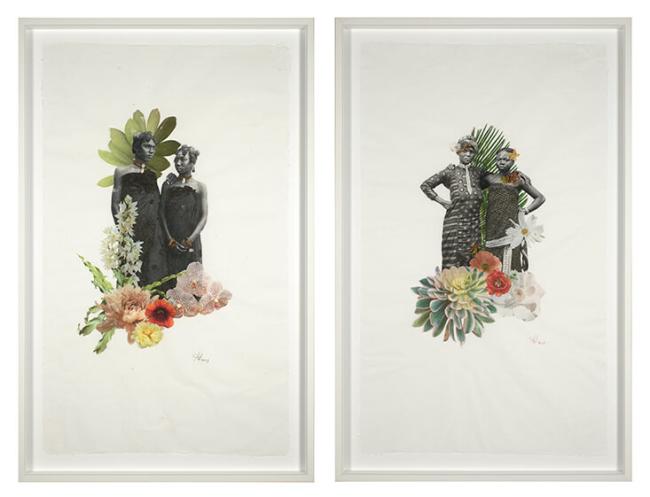
Under the best of circumstances, this project would prove a massive undertaking; given the challenges of the pandemic, it was downright miraculous. The renovation involved dismantling the space, completing a thorough inventory, moving the collection into temporary storage and finally reopening—and so much more—all on a revised timeline. I want to call out the heroic work of the collections management team, led by Deborah Diemente, who did all this while also facilitating collection access by classes and bringing exhibitions into view and active use.
This transformative renovation was made possible through the generosity of donors, and we are ever grateful for their leadership and support throughout the process. With a lead gift of $1 million before the pandemic, Visiting Committee member Jan Fullgraf Golann ’71 launched the project. In the summer of 2021, she was joined by Joan Williams Rhame ’49, whose extraordinary $2.5 million gift completed the needed funding. It has been an honor to have them as partners in creating such lasting benefits for our community.
We made new friends in George and Elaine Keyes, who approached the museum in the fall of 2021 with their interest in endowing a curatorship. That conversation matured into a gift to establish the Mary Walcott Keyes 1931 Curator for Prints, Drawings and Photographs, a position currently held by Aprile Gallant. One of the Keyeses’ philanthropic goals is to honor those who have been instrumental in their lives by giving to places that they knew were important to them. Both Keyeses have family associations with Smith: Elaine’s aunt attended the college, and the naming honors George’s mother. George enjoyed a long curatorial career as a renowned scholar of Dutch and Flemish art, first at the Minneapolis Institute of Art and later as chief curator of the Detroit Institute of Arts until his retirement in 2008. It was truly a visionary gift, and it is our good fortune to have George and Elaine introduce themselves and support our mission.
None of this would be happening without our extraordinary staff, from our front-of-house teams to our senior leadership. I am ever grateful to have such committed colleagues. Change management requires ongoing attention and care and a willingness to consider new questions and opportunities along the way. Lily Foster, now our Deputy Director, has been a real thought leader for us in this area, bringing staff together for training, conversations, shared learning and inclusive decision-making. We were fortunate to have seasoned staff members step into leadership roles while we conducted national searches for new hires following the departure of two department heads last year. In her role as Acting Associate Director of Marketing and Communications, Martha Ebner successfully established a new—and prolific—social media team to generate rich content at a time when the website was the main way our users could access museum offerings. That collaboration directly resulted in compelling blog posts and other communications, diversifying the stories being told and the storytellers telling them. And Charlene Shang Miller, as Acting Associate Director of Learning and Interpretation, did a masterful job managing a lean education department and heavy workload. I am grateful to them both for their grace and dedication.
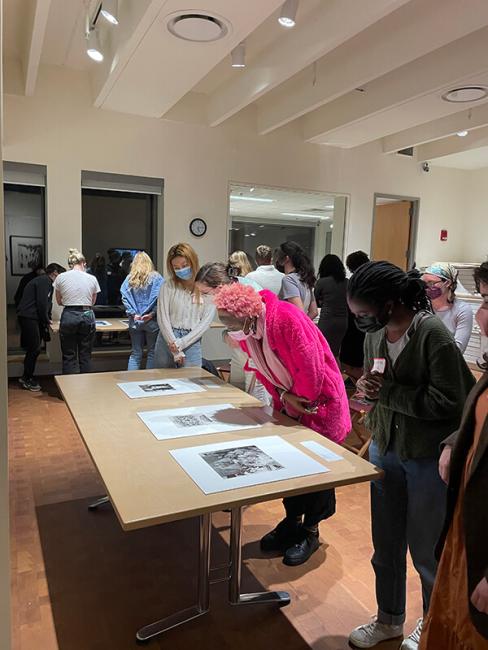
Finally, I am thrilled to welcome our two new senior staff members: Nina C. Peláez, Associate Director of Learning and Interpretation, and Tiffany Bradley, Associate Director of Communications, who joined us in the spring of 2022. It is exciting to have their voices, perspectives and energy at the leadership level. We are happy to have Justin Thomas moving permanently into the position of visitor experience manager, working directly with our gallery assistants and safety staff. It feels great to have a full team on board once again, with restructured roles that are inclusive, responsive and a reflection of who we want to be moving forward.
It all comes back to our core values: connecting art and people in and outside SCMA, sharing authority through the choices and voices we elevate, listening and learning from our audiences and each other, redefining what traditions mean to us and our visitors, recognizing the opportunity to do things differently to be a more relevant and respected resource and holding space for life’s realities as we create energy for the museum’s exciting next chapter.
With gratitude always,
Jessica Nicoll
top: Jessica Nicoll, Director & Louise Ines Doyle '34 Chief Curator; second from top side by side, left: Charlene Shang Miller, Acting Associate Director of Academic Programs and Public Education, engaging students in Marnie Anderson’s FYS 183 Geisha, Wise Mothers, and Working Women in the Cunningham Center for the Study of Prints, Drawings and Photographs. Photo by Henriette Kets de Vries; second from top side by side, right: Amanda Williams. Detail from Matterful Black Lives Tea Set, 2021, from An Imposing Number of Times, Smith College Museum of Art, Northampton, MA, 2020–22. Glazed ceramic, mahogany. Overall artwork: 10 ⅜ inches x 21 ¼ inches x 16 ¼ inches. Gift of the Artist. SC 2021:24 (artwork © Amanda Williams; photograph by Stephen Petegorsky for SCMA); middle top: Objects Conservator Valentine Talland demonstrates painting on wood using traditional materials and techniques for students in Danielle Carrabino’s J-term course on painted wood sculpture, January 2022. Screenshot by Danielle Carrabino; middle bottom: Andrea Chung. American, born 1978. Sula Never Competed; She Simply Helped Others Define Themselves II, 2021. Printed paper collage, gold ink, shells, beads and steel pins on handmade paper. Purchased with the Dorothy C. Miller, class of 1925, Fund. Photo by Stephen Petegorsky for SCMA; bottom: Students deciding on the acquisition of work by artist Meryl Meisler for the annual Moody Purchase Program. Photo by Charlene Shang Miller